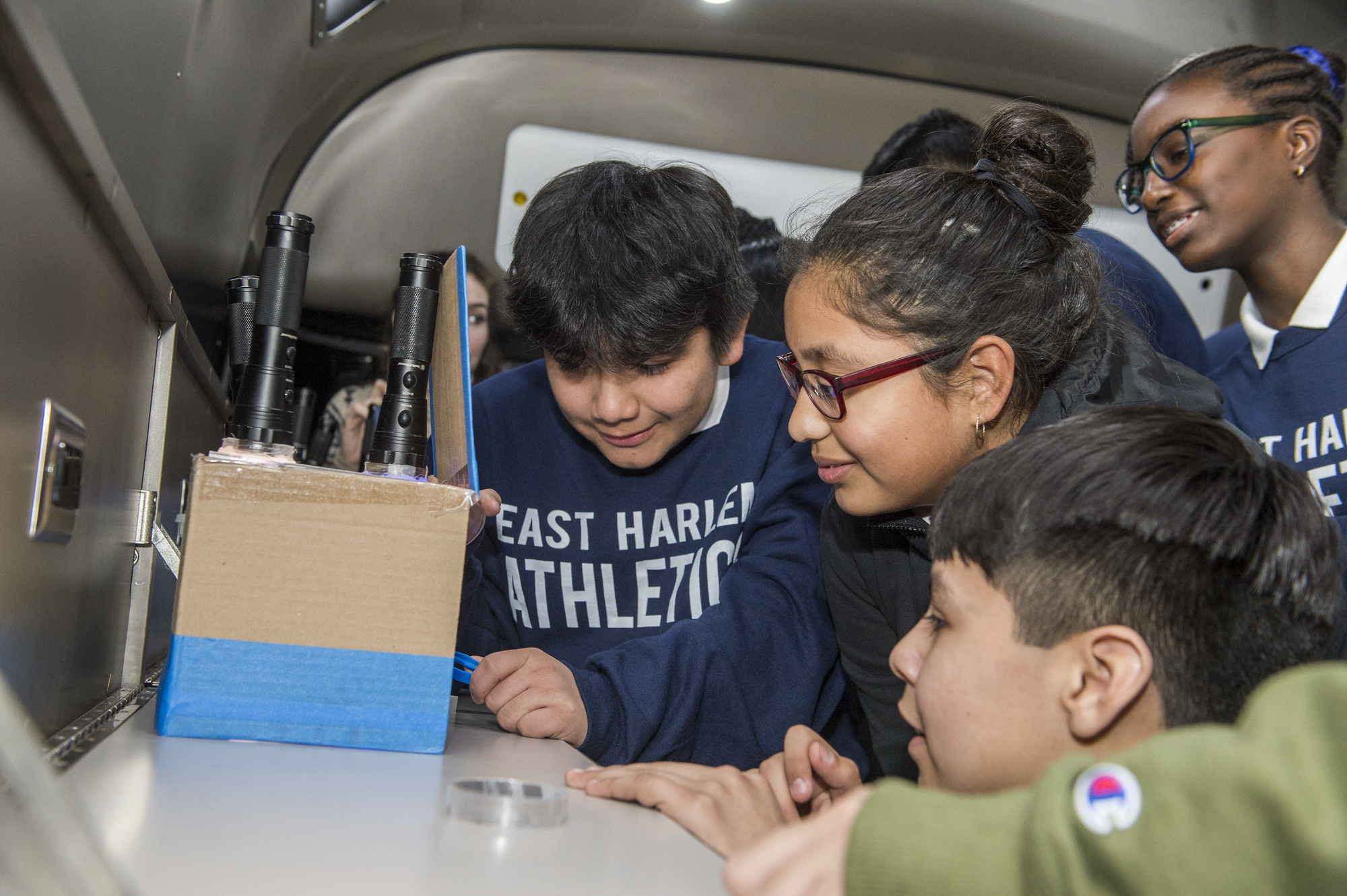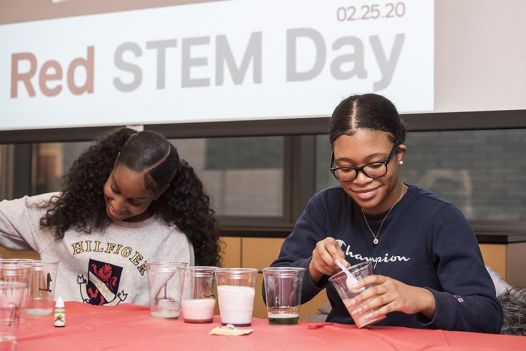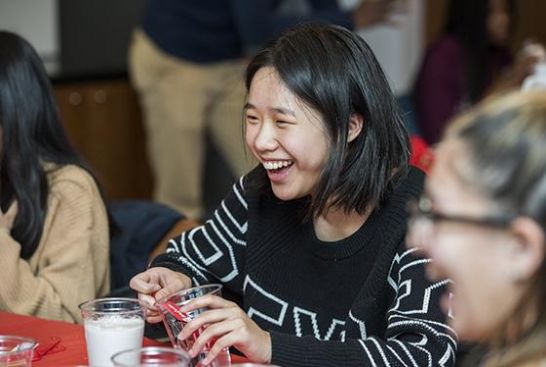
Students visiting the BioBus examine contained samples from various labs to explore new organisms and ecosystems on Big Red STEM Day, hosted Feb. 25 at Weill Cornell Medicine. All photos: StudioBrooke
Ajten Jasarova, a junior at Astor Collegiate Academy in the Bronx, was considering giving up on her dream of becoming a neurologist because she “thought it would be too hard” to pursue. That perception changed after she met current medical and graduate students at the ninth annual Big Red STEM Day at Weill Cornell Medicine.
“After hearing their experiences of going through college and medical school, it changed my mind,” Jasarova said. “It was good to have those face-to-face experiences.”
Jasarova was one of 128 students from New York City and New Jersey schools who attended Big Red STEM Day on Feb. 25, a program spearheaded by Weill Cornell Medicine that aims to inspire the next generation of science, technology, engineering and mathematics (STEM) students and professionals. This initiative engages students from communities underrepresented in STEM.

Participants perform experiments in "Exploring Enzymes" workshop.
For the program, Weill Cornell Medicine partnered with the New York City Department of Education, Weill Cornell Graduate School of Medical Sciences, Cornell Tech, the Cornell Center for Materials Research, Cornell Cooperative Extension – NYC Programs and the nonprofit BioBus, a mobile science lab that was participating for the first time.
Throughout the day, students from eighth to 12th grade participated in a variety of hands-on workshops and group discussions led primarily by doctoral and medical students at Weill Cornell Medicine’s Belfer Research Building. It culminated in the “Dinner with Scientists,” during which participants spoke with faculty about STEM careers.
The day’s events ranged from an engineering workshop to a tour of laboratories in the Caryl and Israel Englander Institute for Precision Medicine at Weill Cornell Medicine. During the “Exploring Enzymes” workshop run by the Tri-Institutional Minority Society at Weill Cornell Medicine, students simulated how the enzyme catalase decomposes hydrogen peroxide to oxygen and water in the body.
After finishing the experiment, Richele Howard, a ninth grade student at H.E.R.O High (Health, Education, and Research Occupations High School) in the Bronx said the day’s events had further sparked her interest in STEM and she hopes to pursue a career related to science.
EvaRose Davis, a H.E.R.O teacher, said the program was an opportunity for her students to apply what they learned in the classroom in a real-world setting. “This is a wonderful way for them to have exposure to things they’ve touched on before but opens up a new door for them,” she said. “It’s awesome — I’ve had a couple of thumbs up from across the room, I know that it’s going to come back into the classroom after this and spread to other students.”

Big Red STEM Day brings smiles to the faces of students visiting Weill Cornell Medicine.
Improved representation in STEM was a focus of the panel on navigating higher education as a first-generation student. Moderated by Daisy Torres-Baez, a diversity programs coordinator at Weill Cornell Medicine, the talk featured four current doctoral and medical students who had been first-generation college students. The discussion ranged from navigating college admissions to connecting with mentors.
Katherine Lopez, a doctoral candidate at Weill Cornell Medicine Graduate School of Medical Sciences, said that when she was growing up she didn’t know how to find a path to get to where she is today. Now she felt obliged to “be a messenger for those who don’t have parents who could support them as much, to tell them there are opportunities out there they might not be aware of.”
Edwin Rosendo, a medical student at Weill Cornell Medicine, said that above all, “representation matters.” "I think just being here, meeting people who look like them, had the same challenges as them, makes all the difference moving forward for these students,” he said.

